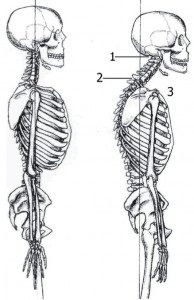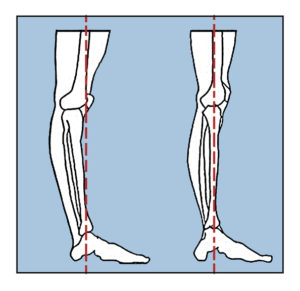 Hyperextension Of The Knees And Headaches
Hyperextension Of The Knees And Headaches
Hyperextension of the knees isn’t good. And headaches aren’t good either.
The number of people that suffer from headaches is staggering. And as incredible as it sounds, there are over 100 different types of headaches.
According to the National Headache Foundation, over 45 million Americans suffer from chronic recurring headaches.
I can’t find any statistics on how many people suffer from hyperextension of the knees. But if I had to guess it is more than the number of people that suffer from headaches.
Hyperextension of the knees causes more problems in the modern world than anyone can imagine.
The number of people that I have helped out of pain by simply telling them to stop locking their knees is pretty amazing.
For what it is worth, hyperextension of the knees is why I do what I do for a living.
I am way too loose.
Some people are born too loose in their joints and too long in their muscles. Which can be both a blessing and a curse.
When I started doing yoga no one told me not to lock my knees. Two years later I was suffering from debilitating knee pain and ended up requiring three surgeries.
That was the end of hyperextension in my life and I learned an essential lesson about the body.
Certain structural factors cannot be exercised away.
There is no workout I could have done that would prevent my knees from hyperextending.
I simply had to change my idea of what a straight leg is and stop locking it backward.
And when I started doing that it genuinely felt that my leg was bent when it was actually straight.
It took a long time for my brain to catch up to what my body was trying to tell it.
It’s All About Weight Transfer
 The body is built to transfer weight from the head to the feet through bones that stack one on top of the other. In this way, the bones mostly hold you up with the help of only a few muscles.
The body is built to transfer weight from the head to the feet through bones that stack one on top of the other. In this way, the bones mostly hold you up with the help of only a few muscles.
When this happens the body is relatively weightless as the bones do their job of holding the body up. As a result, most of the muscles can lay in wait until we need to move.
As soon as any joint in the body is not stacking in this way, additional muscles will have to help to hold the body up. This can lead to tension in any of many places.
Locking any joint will affect other joints by necessity.
Hyperextension of the knees extends the knee joint beyond its normal range of motion. As a result joints above and below will be pulled in different directions.
The three main joints that I see affected by locked knees are:
- The lumbosacral (where the lower back meets the pelvis).
- The thoracolumbar (where the lower back meets the ribcage).
- The atlantooccipital joints (where the head sits on top of the spine).
I think dysfunction in the atlantooccipital joint is the source of many headaches.
And I think that hyperextension of the knees can easily put pressure on the skeleton in other places.
And this pressure can lead to tension in the head and neck that result in headaches.
If you suffer from a lot of headaches without understanding why you should pay some attention to your posture and movement patterns.
You just might discover that they factor into your headaches.
And if you can also feel that you suffer from hyperextension of the knees, you might be able to minimize those headaches.
Insanely clever about the body, Jonathan took all the things I was learning in yoga about the physiology of movement and taught me how to integrate them into my everyday life–by re-teaching me how to walk. Highly intuitive about movement, CoreWalking is part of the reason I have many fewer headaches.
J. Johnson

